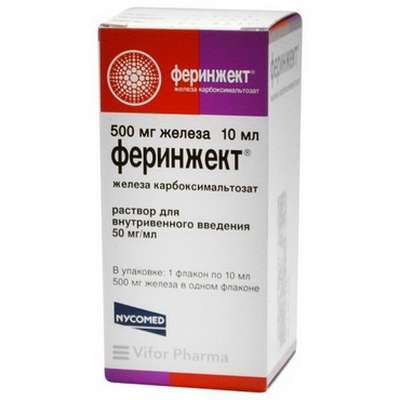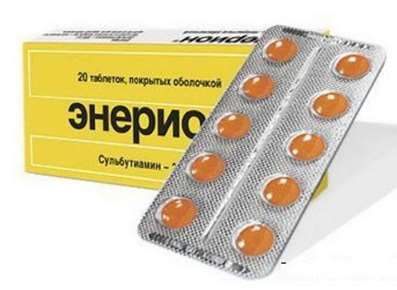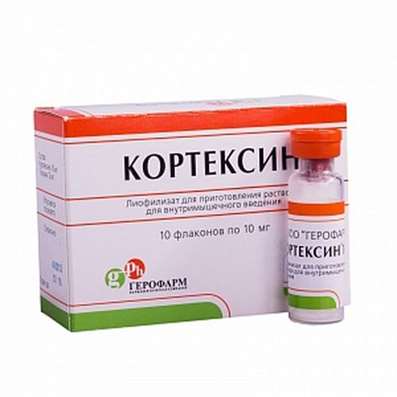Instruction for use: Tranexam
I want this, give me price
Dosage form: Solution for intravenous administration; Film-coated tablets
Active substance: Acidum tranexamicum
ATX
B02AA02 Tranexamic acid
Pharmacological group:
Hemostatic agent [Fibrinolysis inhibitors]
The nosological classification (ICD-10)
A41.8 Other specified septicemia: Fungal sepsis; Abdominal sepsis; Sepsis; Sepsis burn; Surgical sepsis; Sepsis tonsilogenous
D65 Disseminated intravascular coagulation [defibrillation syndrome]: DIC syndrome; Intravascular coagulation; Hyperfibrinolytic bleeding; Defibrillation Syndrome; Hyperfibrinolytic bleeding; Hyperfibrinolytic bleeding post-traumatic; Hypocoagulant phase of DIC syndrome; Convolation of intravascular disseminated; The syndrome of disseminated intravascular ; Defibrinization syndrome; Coagulopathies acquired
D66 Hereditary factor VIII deficiency: Congenital insufficiency of factor VIII; Hemophilia; Hemophilia A; Hemophilia classical; Deficiency of antihemophilic factor of blood VIII; Deficiency of the coagulation factor VIII; Inhibitory form of hemophilia A; Bleeding at hemophilia A; Hereditary hemophilia; Hereditary anomalies of antihemophilic factor VIII; Failure factor VIII; Insufficiency of coagulation factor VIII; Acquired hemophilia; Coagulopathies are hereditary
D69.3 Idiopathic Thrombocytopenic Purpura: Werlhof's Disease; Idiopathic autoimmune thrombocytopenia; Idiopathic thrombocytopenic purpura of adults; Idiopathic thrombocytopenic purpura in adults; Immune idiopathic thrombocytopenic purpura; Immune thrombocytopenia; Bleeding in patients with thrombocytopenic purpura; Evans Syndrome; Thrombocytopenic purpura; Thrombocytopenia of immune origin; Chronic idiopathic thrombocytopenic purpura; Essential thrombocytopenia; Autoimmune thrombocytopenic purpura in pregnancy; Posttransfusion purpura
D69.9 Hemorrhagic condition, unspecified: Diathesis, hemorrhagic (familial); Hemorrhagic diathesis; Hemorrhagic complications; Hemorrhagic conditions; Hemorrhagic diathesis; Hemorrhagic syndrome; Disease of internal organs with hemorrhagic syndrome
D84.1 Defect in the complement system: Hereditary angioedema
K65 Peritonitis: Abdominal infection; Intra-abdominal infections; intra-abdominal infections; Diffuse peritonitis; abdominal Infections; Infections of the abdominal cavity; The infection of the abdominal cavity; The infection of the gastrointestinal tract; Spontaneous bacterial peritonitis
K76.9 Liver disease, unspecified: Change in liver function in heart failure; Restoration of impaired liver function; Severe liver function disorders; Hepatitis; Hepatosis; Hepatopathy; Liver dysfunction; Diseases of the liver; Impaired liver function; Dysfunction of the liver; Infringements of function of a liver of an inflammatory etiology; Functional liver failure; Functional disorders of the liver; Chronic liver disease; Chronic diffuse liver disease; Enterogenic diseases of the gallbladder and liver
K86.8.1 * Pancreatic necrosis: Pancreatic abscess; Sepsis pancreatogenic; Pancreatic abscesses; Pancreatic necrosis
K92.2 Gastrointestinal bleeding, unspecified: Gastrointestinal and intestinal bleeding; Acute bleeding from the upper gastrointestinal tract; Gastric bleeding; Gastrointestinal bleeding; Intraoperative abdominal bleeding; Intestinal bleeding; Bleeding in the upper part of the digestive tract; Bleeding gastrointestinal; Bleeding from the upper gastrointestinal tract; Bleeding from the digestive tract; Bleeding intraoperative abdominal; Recurrent bleeding in the digestive tract; Diagnosis of bleeding from the small intestine; Ulcer bleeding; Mallory-Weiss syndrome; Recurrent bleeding from peptic ulcers; Bleeding gastric
N93.9 Abnormal uterine and vaginal bleeding, unspecified: Uterine bleeding; Dysfunctional uterine bleeding; Uterine bleeding dysfunctional
O20 Bleeding in early pregnancy: Bleeding during pregnancy
O26.9 Pregnancy-related condition, unspecified: Gestosis; Pregnancy Pregnancy; Gestosis; Psychological problems in pregnancy; Stretch marks after pregnancy; Condition of hair after pregnancy; Condition of nails after pregnancy; Convulsions with gestosis
O46 Prenatal bleeding, not elsewhere classified: Bleeding during pregnancy
O72.2 Late or secondary postpartum hemorrhage: Bleeding during pregnancy
O83.2 Childbirth with other obstetric procedures [manual procedures]: Manual detachment; Manual removal of the placenta; Manual correction of fetal position
P02.9 Fetus and newborn affected by unspecified abnormalities of chorion and amnion: Chorion abruption
R04.0 Epistaxis: Nasal bleeding; Nasal bleeding; Epistaxis
R04.8.0 * Bleeding pulmonary: Pulmonary bleeding
R31 Nonspecific hematuria: Hematuria; Hematuria from the lower part of the urinary system; Microhematuria; Machemuturia
R57 Shock, not elsewhere classified: Obstructive shock
R58 Bleeding, not elsewhere classified: Abdominal apoplexy; Hemorrhagia; Haemorrhage of the esophagus; Hemorrhage; Generalized bleeding; Diffuse bleeding; Diffuse bleeding; Prolonged bleeding; Blood loss; Blood loss during surgical interventions; Bleeding during surgery and in the postoperative period; Bleeding during labor; Bleeding and haemorrhage in hemophilia B; Bleeding from the gums; Bleeding intraoperative abdominal; Bleeding against a background of coumarin anticoagulants; Hepatic hepatitis; Bleeding in hemophilia A; Bleeding at hemophilia A; Bleeding with inhibitory forms of hemophilia A and B; Bleeding due to leukemia; Bleeding in patients with leukemia; Bleeding; Bleeding due to portal hypertension; Bleeding due to hyperfibrinolysis; Drug bleeding; Local bleeding; Local bleeding due to activation of fibrinolysis; Massive blood loss; Acute blood loss; Parenchymal hemorrhage; Hepatic bleeding; Postoperative hemorrhage; Kidney bleeding; Vascular-platelet hemostasis; Traumatic bleeding; Threatening bleeding; Chronic blood loss
T45.5 Antikoagulant poisoning: Overdose of heparin; Overdose of neodikumarina; Overdose of anticoagulants coumarinic and indanedione; Overdose of anticoagulants of indirect action; Overdose of indirect anticoagulants; An overdose of anticoagulants; Overdose of anticoagulants or fibrinolytics
T45.6 Poisoning with drugs that affect fibrinolysis: Antidote for fibrinolytic therapy; Overdose of anticoagulants or fibrinolytics
T79.4 Traumatic shock: Haemorrhagic shock; Crash Syndrome; Posthemorrhagic shock; Postoperative shock; Post-traumatic shock; Post-traumatic shock; Traumatic shock; Syndrome of hemorrhagic shock and encephalopathy
T81.0 Bleeding and hematoma complicating the procedure, not elsewhere classified: Bleeding in the postoperative period; Bleeding during transfusion; Bleeding during operations on the brain; Bleeding during surgical interventions; Bleeding after colorectal interventions; Bleeding after prostatectomy; Bleeding during surgery and in the postoperative period; Bleeding due to surgery on the prostate and urinary tract
Y44.2 Adverse reactions in the therapeutic use of anticoagulants
Z100 * CLASS XXII Surgical practice: Abdominal surgery; adenomectomy; Amputation; Coronary angioplasty; Angioplasty of the carotid arteries; Antiseptic skin treatment for wounds; Antiseptic Hand; Appendectomy; atherectomy; Balloon coronary angioplasty; Vaginal hysterectomy; The coronary bypass; Interventions in the vagina and cervix; Interventions on the bladder; Intervention in the mouth; Restoration and reconstructive surgery; Hand hygiene of medical personnel; Gynecologic surgery; Gynecological intervention; Gynecological surgery; Hypovolemic shock during operations; Disinfection of purulent wounds; Disinfection of wounds edges; Diagnostic intervention; Diagnostic procedures; Cervical Diathermocoagulation; Long-surgery; Replacing the fistula catheters; Infection in orthopedic surgery; Artificial heart valve; cystectomy; Short-term outpatient surgery; Short-term operation; Short surgical procedures; Krikotireotomiya; Blood loss during surgery; Bleeding during surgery and in the postoperative period; Kuldotsentez; laser photocoagulation; laser coagulation; retinal laser coagulation; Laparoscopy; Laparoscopy in Gynecology; CSF fistula; Small gynecological operations; Small surgical procedures; Mastectomy and subsequent plastic; mediastinotomy; Microsurgical operations on the ear; Mukogingivalnye operation; suturing; Minor surgery; neurosurgical operation; Immobilization of the eyeball in ophthalmic surgery; testectomy; pancreatectomy; Perikardektomiya; The period of rehabilitation after surgery; The period of convalescence after surgery; Percutaneous transluminal coronary angioplasty; Pleural thoracentesis; Pneumonia postoperative and posttraumatic; Preparation for surgical procedures; Preparation for surgery; Preparation of the surgeon's hands before surgery; Preparation of the colon for surgical procedures; Postoperative aspiration pneumonia in neurosurgical and thoracic surgery; Postoperative nausea; Postoperative bleeding; postoperative granuloma; postoperative shock; The early postoperative period; myocardial revascularization; Radiectomy; gastric Resection; bowel resection; uterine Resection; liver Resection; enterectomy; Resection of part of the stomach; Reocclusion of the operated vessel; Bonding tissues during surgical procedures; Removal of sutures; Condition after eye surgery; Condition after surgery; Condition after surgery in the nasal cavity; Condition after gastrectomy; Status after resection of the small intestine; Condition after tonsillectomy; Condition after removal of the duodenum; Condition after phlebectomy; Vascular surgery; Splenectomy; Sterilization of surgical instruments; Sterilization of surgical instruments; sternotomy; Dental surgery; Dental intervention in periodontal tissues; strumectomy; Tonsillectomy; Thoracic surgery; Thoracic surgery; total gastrectomy; Transdermal intravascular coronary angioplasty; Transurethral resection; Turbinektomiya; Removal of a tooth; cataract surgery; Removal of cysts; tonsillectomy; Removal of fibroids; Removing the mobile primary teeth; Removing polyps; Removing broken tooth; Removal of the uterus body; Removal of sutures; Fistula likvoroprovodyaschih ways; Frontoetmoidogaymorotomiya; Surgical infection; Surgical treatment of chronic limb ulcers; Surgery; The surgery in the anal area; The surgery on the colon; Surgical practice; The surgical procedure; Surgical interventions; Surgery on the gastrointestinal tract; Surgical procedures on the urinary tract; Surgical procedures on the urinary system; Surgical intervention of the genitourinary system; Surgical procedures on the heart; Surgical manipulation; surgery; Surgery on the veins; Surgical intervention; Vascular surgery; Surgical treatment of thrombosis; Surgery; cholecystectomy; Partial gastric resection; hysterectomy; Percutaneous transluminal coronary angioplasty; Percutaneous transluminal angioplasty; Coronary artery bypass; tooth Extirpation; Extirpation of milk teeth; pulpectomy; pulsative cardiopulmonary bypass; tooth Extraction; teeth Extraction; cataract extraction; Electrocoagulation; endourological intervention; episiotomy; Etmoidotomiya; Complications after tooth extraction
Composition
Film-coated tablets - 1 tab.
active substance: Tranexamic acid 250 mg; 500 mg
Excipients:
Core - microcrystalline cellulose; Giprolose; Sodium carboxymethyl starch; talc; Silicon dioxide colloid; Calcium stearate
The membrane is hypromellose; Titanium dioxide; talc; Macrogol
Solution for intravenous administration - 1 liter
active substance: Tranexamic acid 50 g
Excipients: water for injection - up to 1 liter
Description of dosage form
Tablets: biconvex, covered with a film coat of white color. On a cross-section - white or white with a creamy or grayish shade of color.
Solution: transparent or almost transparent, colorless or with a light brown tinge.
Pharmachologic effect
Mode of action - Anti-inflammatory, anti-allergic, hemostatic, antifibrinolytic.
Pharmacodynamics
Tranexamic acid is an antifibrinolytic agent that specifically inhibits the activation of profibrinolysin (plasminogen) and its conversion to fibrinolysin (plasmin). Has local and systemic hemostatic effect in bleeding associated with increased fibrinolysis (platelet pathology, menorrhagia), as well as anti-inflammatory, antiallergic, anti-infective and antitumor actions by suppressing the formation of kinins and other active peptides involved in allergic and inflammatory reactions. The experiment confirmed the own analgesic activity of tranexamic acid, as well as a potentiating effect on the analgesic activity of opiates.
Pharmacokinetics
Absorption at oral intake of doses in the range of 0.5-2 g is 30-50%. Tmax if taken orally 0.5; 1 and 2 g - 3 hours, Cmax - 5; 8 and 15 μg / ml, respectively. Binding to plasma proteins (profibrinolysin) is less than 3%.
Distributed in tissues relatively evenly (except - spinal fluid, where the concentration is 1/10 of the plasma); Penetrates the placental barrier, into breast milk (about 1% of the concentration in the mother's plasma). It is found in seminal fluid, where it reduces fibrinolytic activity, but does not affect the migration of spermatozoa. The initial volume of distribution is 9-12 liters. Antifibrinolytic concentration in various tissues persists for 17 hours, in plasma - up to 7-8 hours.
Metabolizes a small part. The curve AUC has a three-phase form with T1 / 2 in the final phase - 3 h (for a solution for intravenous administration - 2 h). The total renal clearance is equal to the plasma clearance (7 l / h). It is excreted by the kidneys (the main way is glomerular filtration) - more than 95% unchanged during the first 12 hours.
Two metabolites of tranexamic acid - N-acetylated and deaminated derivatives - were identified. With impaired renal function, there is a risk of cumulation of tranexamic acid.
Indications of the Tranexam
Tablets
Bleeding or risk of bleeding in the background:
- Increased local fibrinolysis (uterine, including vWD and other coagulopathies, nasal, gastrointestinal bleeding, hematuria, bleeding after prostatectomy, conization of the cervix due to carcinoma, extraction of the tooth in patients with hemorrhagic diathesis);
- strengthening of generalized fibrinolysis (malignant neoplasms of the pancreas and prostate gland, operations on the thoracic organs, postpartum hemorrhages, manual detachment, leukemia, liver diseases);
Bleeding during pregnancy;
Hereditary angioedema, allergic diseases (eczema, allergic dermatitis, urticaria, drug and toxic rash);
Inflammatory diseases (tonsillitis, pharyngitis, laryngitis, stomatitis, aphthae of the oral mucosa).
Solution for intravenous administration
Bleeding or risk of bleeding against the background of increased fibrinolysis as generalized (bleeding during surgery and postoperative period, postpartum hemorrhage, manual detachment, chorion detachment, bleeding during pregnancy, malignant neoplasms of the pancreas and prostate gland, hemophilia, hemorrhagic complications of fibrinolytic therapy, thrombocytopenic Purpura, leukemia, liver disease, previous therapy with streptokinase), and local (uterine bleeding after a horse Cervical dysfunction for carcinoma, nasal, pulmonary, gastrointestinal, hematuria, bleeding after prostatectomy, tooth extraction in patients with hemorrhagic diathesis);
Surgical interventions on the bladder;
Surgical manipulation with a systemic inflammatory reaction (sepsis, peritonitis, pancreonecrosis, severe and moderate severity of gestosis, shock of various etiologies and other critical conditions).
Contraindications
Hypersensitivity to the drug;
Subarachnoid hemorrhage.
With caution: thrombosis (thrombosis of cerebral vessels, myocardial infarction, thrombophlebitis) or the threat of their development; Thrombohemorrhagic complications (in combination with heparin and indirect anticoagulants); Violation of color vision; Hematuria from the upper parts of the urinary tract (blood clot obstruction is possible); Renal failure (possible cumulation).
Side effects
Tablets
There may be nausea, vomiting, heartburn, diarrhea, rash, itching, decreased appetite, drowsiness, dizziness. There may be a violation of color perception; Rarely - thrombosis, thromboembolism.
Solution for intravenous administration
Allergic reactions (rash, itchy skin, urticaria), dyspeptic phenomena (anorexia, nausea, vomiting, heartburn, diarrhea), dizziness, weakness, drowsiness, tachycardia, chest pain, hypotension (with rapid on / in injection), violation of color Sight, blurred vision; Thrombosis or thromboembolism (the risk of development is minimal).
Interaction
When combined with hemostatic drugs and hemocoagulase, thrombus formation can be activated.
In addition to the solution for intravenous administration
Pharmaceutically incompatible with blood products, solutions containing penicillin, urokinase, hypertensive drugs (norepinephrine, deoxyxypinephrine hydrochloride, metarnin bitartrate), tetracyclines, dipyridamole, diazepam.
Dosing and Administration
Tablets
Inside.
With local fibrinolysis appoint 1000-1500 mg 2-3 times a day.
With profuse uterine bleeding appoint 1000-1500 mg 3-4 times a day for 3-4 days.
When bleeding against the background of Willebrand disease and other coagulopathies - 1000-1500 mg 3-4 times a day. The duration of the course of treatment is 3-10 days.
After the operation, conization of the cervix is prescribed 1500 mg 3 times a day for 12-14 days.
With nasal bleeding appoint 1000 mg 3 times a day for 7 days.
Patients with coagulopathies after extraction of the tooth are prescribed 1000-1500 mg 3-4 times a day for 6-8 days.
When bleeding during pregnancy - 250-500 mg 3-4 times a day until the complete stop of bleeding. The average duration of treatment is 7 days.
When hereditary angioedema is prescribed, 1000-1500 mg 2-3 times a day, continuously or intermittently, depending on the presence of prodromal symptoms.
With symptoms of allergy and inflammation - 1000-1500 mg 2-3 times a day for 3-9 days, depending on the severity of the condition.
In generalized fibrinolysis, therapy is started with the parenteral (iv) administration of Tranexam®, followed by a transition to oral administration of 1000-1500 mg 2-3 times a day.
In case of disturbance of the excretory function of the kidneys, correction of the dosing regimen is necessary: at a creatinine concentration of 120-250 μmol / l, 1000 mg 2 times a day is prescribed; At a creatinine concentration of 250-500 μmol / l, 1000 mg once a day is prescribed; At a creatinine concentration of more than 500 μmol / l, 500 mg once a day are prescribed.
Solution for intravenous administration
IV (by drop, stream injections).
When generalized fibrinolysis is administered in a single dose of 15 mg / kg every 6-8 hours, the rate of administration is 1 ml / min.
With local fibrinolysis, the administration of the drug in a dose of 250-500 mg 2-3 times a day is recommended.
In prostatectomy or bladder surgery, 1 g is injected during the operation, then 1 g every 8 hours for 3 days, after which they switch to oral tablet form until the hematoma disappears.
With a high risk of bleeding, with a systemic inflammatory reaction - at a dose of 10-11 mg / kg for 20-30 minutes before the intervention.
Patients with coagulopathies before the extraction of the tooth are administered at a dose of 10 mg / kg, after extraction of the tooth, the intake of the tablet form of the preparation is prescribed.
In case of disturbance of the excretory function of the kidneys, correction of the dosage regimen is necessary depending on the concentration of creatinine in the blood: at a creatinine concentration of 120-250 μmol / l, 10 mg / kg 2 times a day are prescribed; At 250-500 μmol / l - 10 mg / kg once a day; At> 500 μmol / kg - 5 mg / kg once a day.
Precautionary measures
Before and during the treatment it is necessary to conduct an examination of the ophthalmologist (determination of visual acuity, color perception, condition of the fundus).
In studies on animals, teratogenic and embryotoxic effects were not detected.
Release form
Tablets, film-coated, 250 mg, 500 mg. In contour acrylic packing from a film of PVC and a foil of aluminum printed varnished, 10 pieces. 1, 2, 3, 5 contour mesh packages in a pack of cardboard.
Solution for intravenous administration, 50 mg / ml. In ampoules of neutral glass, 5 ml. In contour cell packs of PVC film and aluminum foil, 5 pcs. 1 or 2 contour squares in a pack of cardboard. 20, 50 or 100 contour mesh packages in cardboard boxes or in corrugated cardboard boxes (for inpatient).
Manufacturer
FSUE "Moscow Endocrine Plant". 109052, Russia, Moscow
The owner of the registration certificate / organization accepting the claims: OJSC Nizhpharm. 603950, Russia, Nizhny Novgorod
Packer: FSUE "Moscow Endocrine Plant". 109052, Russia, Moscow
ZAO Obninsk Chemical and Pharmaceutical Company (ZAO OKHFK). 249036, Russia, Kaluga Oblast, Obninsk
Conditions of supply of pharmacies
Solution: prescription.
Tablets 250 and 500 mg: without a prescription.
Storage conditions of the drug Tranexam
At a temperature not higher than 25 ° C.
Keep out of the reach of children.
Shelf life of Tranexam
3 years.
Do not use after the expiry date printed on the package.

 Cart
Cart





